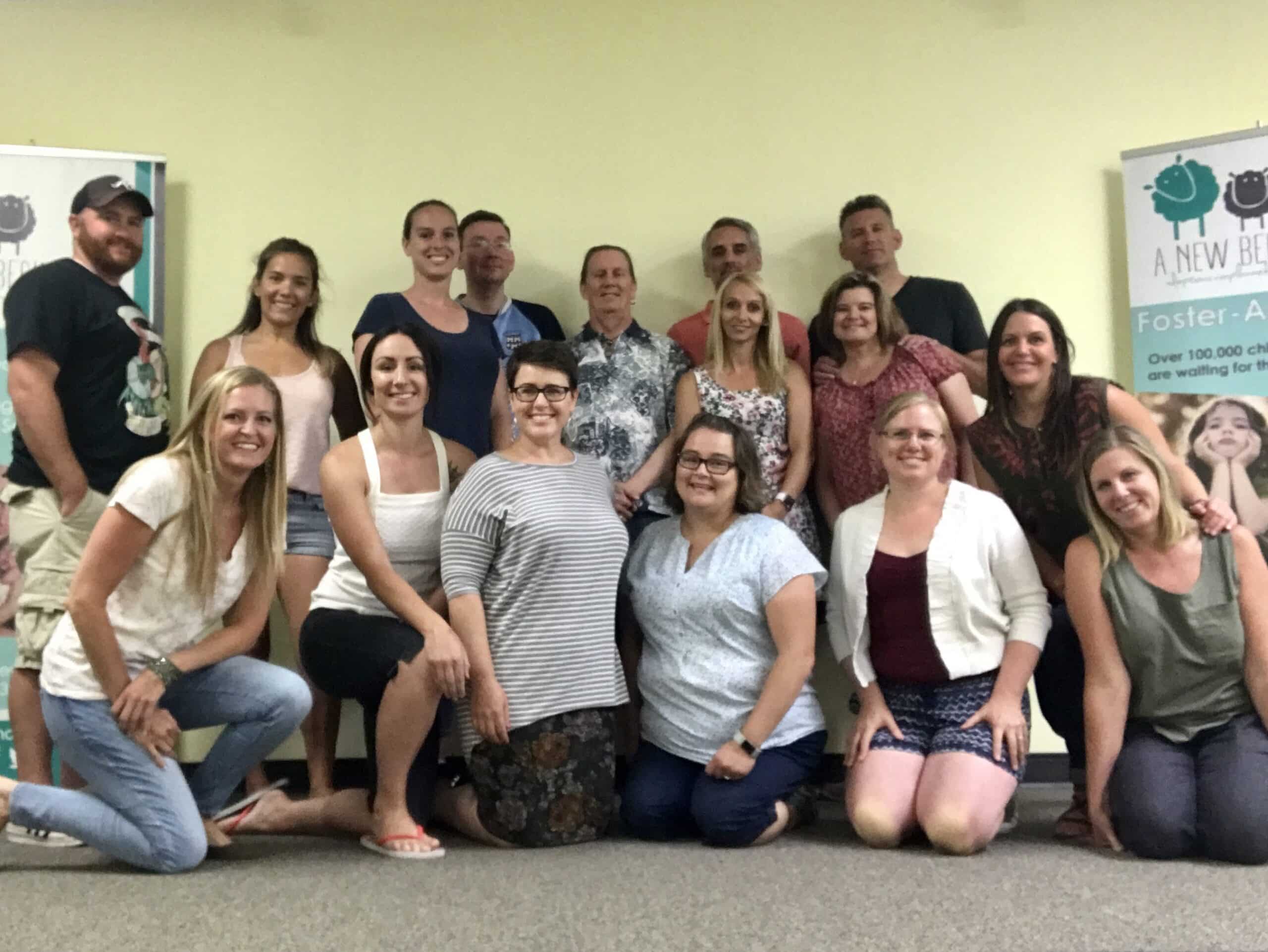Every team has flaws and will face hardships. How you treat your team members is really important, especially in business. You have a chance to make or ruin your team. Teamwork is critical to a company’s success.
Improv could help a team to foster unity, which encourages trust in one another and trust in one’s own intuition.
When a team learns to appreciate each other’s abilities to listen, react, encourage, improvise, and acknowledge each other, they enter a new level of relationship. They learn to establish a supportive environment in which imperfections are accepted and viewed as a learning opportunity. Being fearless in taking risks and making mistakes is a terrific method to build a positive attitude that leads to improved ways of finding new solutions.
Francesca Gino, a professor at Harvard Business School, revealed her findings from an academic study after witnessing a range of teams at a number of significant firms throughout the world in an article. Mentioning that The best-communicating group, with everyone participating and learning, was not in a corporate workplace but in an improv comedy class.
Everyone has a chance to speak, regardless of who is creating a scene or narrating a story. Participants collaborate and encourage one another as they work toward a shared goal, and members’ contributions are appreciated and recognized. It is critical to incorporate everyone in this way because as we share one other’s thoughts and viewpoints, we learn from them and our conclusions improve. Furthermore, the more we believe people respect our contributions, the more likely we are to express our thoughts.
Sharing three tips for improv approaches that might be very beneficial to leaders looking to engage their teams.
- Listening intently to what others are saying
- Don’t presume you know everything.
- Make everyone feel safe enough to contribute.
Here are recommended 3 improv games for team collaboration. They are most usually connected with theater and performance. However, they can be just as useful in professional contexts as communication games, trust-building games, and team-building activities.
THE AD GAME
- Divide the team: Split the team into smaller groups, ideally with four to six members in each group. If you have a larger team, you can have multiple groups running simultaneously.
- Choose a product or service: Select a product or service for each group to advertise. It could be a real product, an imaginary one, or a combination of both. Make sure each group has a different product to promote.
- Assign roles: Within each group, assign roles to the team members. Designate one person as the client or the owner of the product, and the remaining members as the advertisers.
- Set a time limit: Determine a specific time limit for each advertisement. This can be based on the group’s preference, but typically it ranges from 1-3 minutes per advertisement.
- Start the timer and improvise: Once the roles are assigned and the time limit is set, start the timer, and the group begins their improvised advertisement. They must quickly come up with creative and persuasive ways to promote the product or service.
- Emphasize key selling points: Encourage the advertisers to highlight the product’s unique features, benefits, and selling points. They can use humor, storytelling, catchy slogans, jingles, or any other techniques that make the advertisement memorable and engaging.
- Rotate roles: After each advertisement, rotate the roles within the group so that different team members get a chance to be the client and the advertisers. This allows everyone to participate and contribute to the game.
- Provide feedback: After each advertisement, allow time for feedback and discussion. Encourage the team to share what they liked about each advertisement, what could be improved, and any standout moments. Constructive feedback helps the team learn and grow together.
- Repeat and explore variations: Keep playing The Ad Game with different products or services, rotating roles within each group. You can introduce variations such as incorporating specific themes, constraints, or playing with different advertising styles.
As a team fosters collaboration, creativity, and communication skills. It encourages team members to think on their feet, support each other’s ideas, and work together to create entertaining advertisements. The game also provides an opportunity for the team to bond and have fun while developing their improvisation skills.
WHAT ARE YOU DOING
- Form a circle: Gather the team members and have them stand in a circle. This game requires participants to have a clear view of each other.
- Explain the game: Briefly explain the rules of the game. In “What Are You Doing?”, each participant takes turns miming an action while verbally describing a different action. The goal is to keep the actions and descriptions in sync while keeping the game fast-paced and entertaining.
- Start the game: The first player steps into the center of the circle and begins miming an action. For example, they might pretend to swim. However, instead of saying “I’m swimming,” they say a different action like “I’m baking a cake.”
- The next player’s turn: The player to the left of the first player then steps into the center and must mimic the action of the previous player while coming up with a new action and verbalizing it. For example, if the previous player was pretending to bake a cake, the new player might pretend to bake a cake as well, but verbally say something like “I’m painting a masterpiece.”
- Keep the game going: The game continues with each player stepping into the center, mimicking the previous player’s action, and verbally describing a new action. The goal is to keep the actions and descriptions flowing quickly, making the game challenging and entertaining.
- Avoid repetition and hesitation: As the game progresses, players must be mindful not to repeat actions or hesitate for too long. Encourage participants to be creative and come up with unique actions and descriptions to keep the game engaging.
- Increase the speed: As the team becomes more comfortable with the game, you can increase the pace by setting a timer for each turn. For example, each player might have 10 seconds to mimic and describe the action before moving on to the next player.
- Continue playing: Keep the game going for as long as desired, allowing each player to have multiple turns in the center. You can play until everyone has had a chance or set a specific time limit.
This is a lively and interactive game that encourages quick thinking, creativity, and teamwork. It helps team members practice active listening, adaptability, and effective communication. Most importantly, it creates a fun and supportive environment that strengthens relationships and promotes team bonding.
YES, LET’S
- Form pairs or small groups: Divide the workshop participants into pairs or small groups of three to five people. Each group will work together for this game.
- Set the scene: Instruct each group to choose a specific scenario or scene. It can be anything from a workplace situation to an imaginary scenario. Encourage them to be creative and think outside the box.
- Begin with a suggestion: One person in each group starts the scene by making a simple suggestion or statement related to the chosen scenario. For example, if the scene is set in a restaurant, someone might say, “Let’s set the table for a big dinner party.”
- Say “Yes, Let’s”: The next person in the group responds with enthusiasm and builds upon the suggestion by saying, “Yes, let’s…” followed by an addition to the scene. For instance, they could say, “Yes, let’s set the table with elegant tablecloths and sparkling silverware.”
- Continue building: The next person in the group then responds with, “Yes, let’s…” and adds their contribution to the scene. Each participant continues to build upon the previous statements, saying “Yes, let’s…” and adding new elements to the scene.
- Avoid blocking or negating: Emphasize that participants should avoid blocking or negating each other’s ideas. The key is to accept and build upon the suggestions, keeping the momentum and creativity flowing.
- Keep the scene progressing: The group members should take turns, one after another, contributing to the scene with positive and supportive responses. The scene should continue to evolve and grow with each “Yes, let’s” statement.
- Explore different possibilities: Encourage participants to explore various options, twists, and unexpected developments in the scene. The goal is to keep the improvisation dynamic and exciting.
- Reflect and debrief: After each group has had a chance to play, gather the participants and facilitate a discussion. Ask them to share their experiences, what they enjoyed about the game, and any insights they gained from practicing “Yes, Let’s.” Discuss the importance of accepting and building upon ideas in a collaborative setting.
- Repeat and vary: You can play multiple rounds of “Yes, Let’s,” allowing different groups to participate and explore different scenarios. You can also introduce variations, such as setting specific constraints or themes for the scenes.
Playing “Yes, Let’s” in an improv workshop encourages participants to embrace a positive and collaborative mindset. It helps them practice active listening, accepting ideas, and building upon them in a supportive and creative manner. The game fosters teamwork, adaptability, and the ability to think on one’s feet.
They are countless improv games that you can utilize in building the collaboration of your team. Here in Improv Team Culture, we provide virtual or in-person innovative business team workshops for companies of all sizes; providing team building and skills training by using the principles of improv comedy.
Check out our FREE resource: 14 Tips to Make Your Message Memorable and make simple actionable steps towards your speaking goals immediately.


